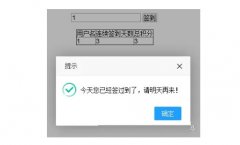php头编码实例设置方法及代码
时间:2023-12-12当网站运行过程中产生输出,并且这些输出包含了非ASCII字符(如中文、日文等),那么浏览器就需要知道这些字符的编码格式,才能正确显示这些字符。而PHP头编码可以告诉浏览器哪种编码格式用于本网页的输出流。
本篇攻略将为大家简单介绍PHP头编码的设置方法及其对应的实例代码,以供参考。
设置PHP头编码格式
要设置PHP头编码格式,需要在PHP程序中插入一行特定的代码:
header("Content-Type:text/html;charset=utf-8");
上述代码中,header()是PHP自带的函数之一,用于设置http头信息。Content-Type是http头信息之一,它用于告诉浏览器返回的内容的类型。在这里我们设置返回的内容类型为text/html,这是网页最常见的类型。而charset则用于设置编码格式,这里我们将编码格式设置为utf-8。
需要注意的是,设置PHP头编码格式的代码必须放在任何输出之前,否则代码将不起作用。最好放在PHP程序的最开始处。
实例说明
示例一:显示中文内容
假设我们要在网页上输出一段中文内容,同时确保浏览器能正确解析这些中文字符。那么我们需要在PHP程序中插入以下代码:
<?php
header("Content-Type:text/html;charset=utf-8");
echo "这是一段中文内容";
?>
上述代码中,我们使用了echo语句输出一段中文内容。而在代码的最开始处,我们使用header()函数设置了编码格式为utf-8,从而确保浏览器能正确解析这些中文字符。
示例二:输出JSON格式数据
假设我们要输出一个JSON格式的数据,且数据中包含了中文内容。那么我们需要在PHP程序中插入以下代码:
<?php
header("Content-Type:application/json;charset=utf-8");
$data = array('name'=>'张三','age'=>25,'city'=>'上海');
$json = json_encode($data,JSON_UNESCAPED_UNICODE);
echo $json;
?>
上述代码中,我们首先使用header()函数设置了编码格式为utf-8。接着我们创建了一个关联数组,包含了一些基本的信息。随后我们使用json_encode()函数将这个关联数组转化为JSON格式的字符串,注意这里要使用JSON_UNESCAPED_UNICODE参数,以防止JSON字符串中的中文被转义为Unicode编码。最后我们使用echo语句输出这个JSON格式的字符串。
总结
通过本篇攻略,我们学习了如何在PHP程序中设置头编码格式,以保证浏览器能正确解析输出流中包含的非ASCII字符。需要注意的是,头编码的设置必须放在所有输出之前,否则不起作用。同时,我们还提供了两个实例,帮助大家理解和应用头编码设置的方法。
 PHP+ajax+mysql+layui实现每日签到及提醒功能这篇文章主要为大家详细介绍了使用 PHP + layui 实现每日 签到 及提醒功能,具有一定的参考价值,感兴趣的小伙伴们可以参考一下,首次签到获得1个积分,第二次签到获得2个积
PHP+ajax+mysql+layui实现每日签到及提醒功能这篇文章主要为大家详细介绍了使用 PHP + layui 实现每日 签到 及提醒功能,具有一定的参考价值,感兴趣的小伙伴们可以参考一下,首次签到获得1个积分,第二次签到获得2个积